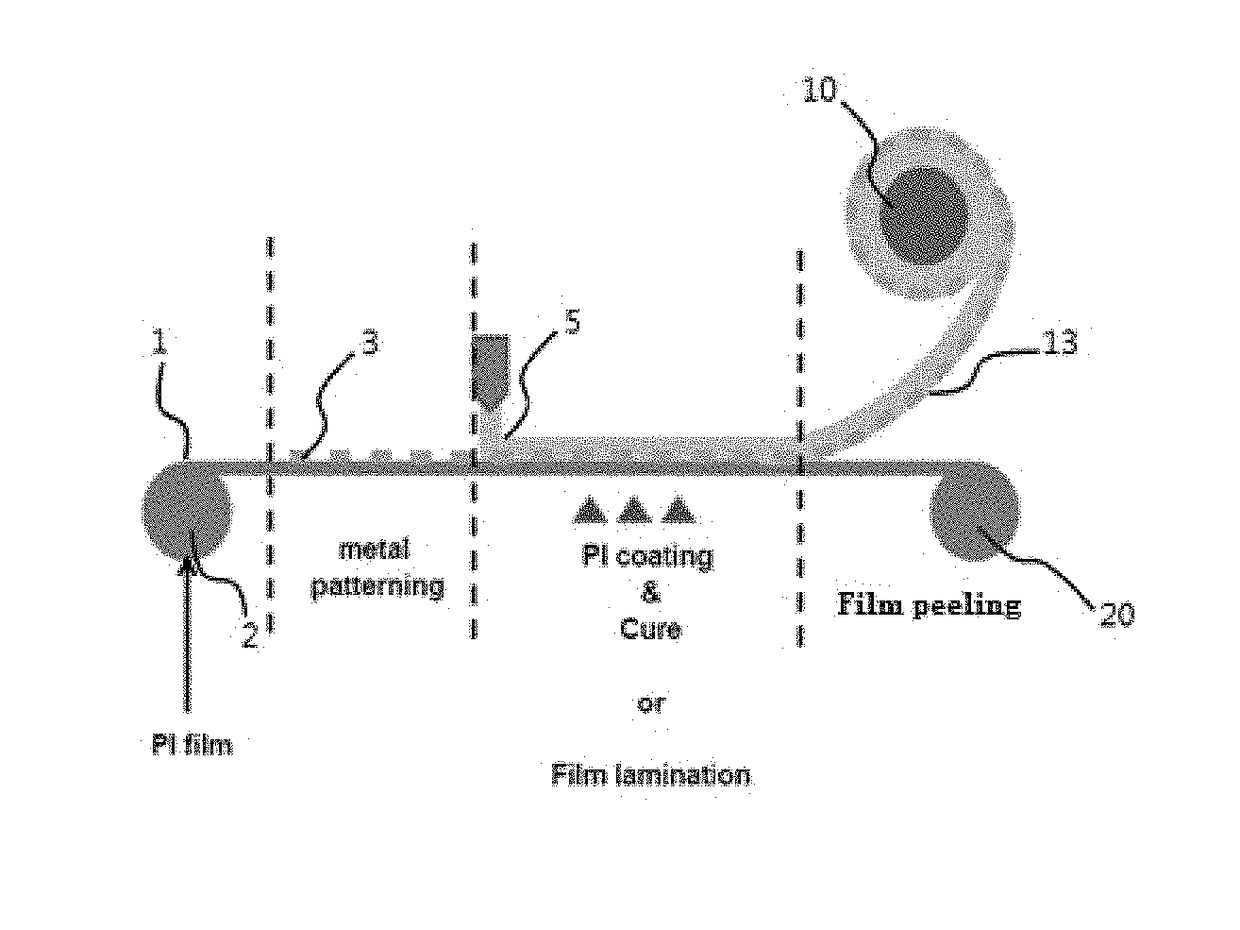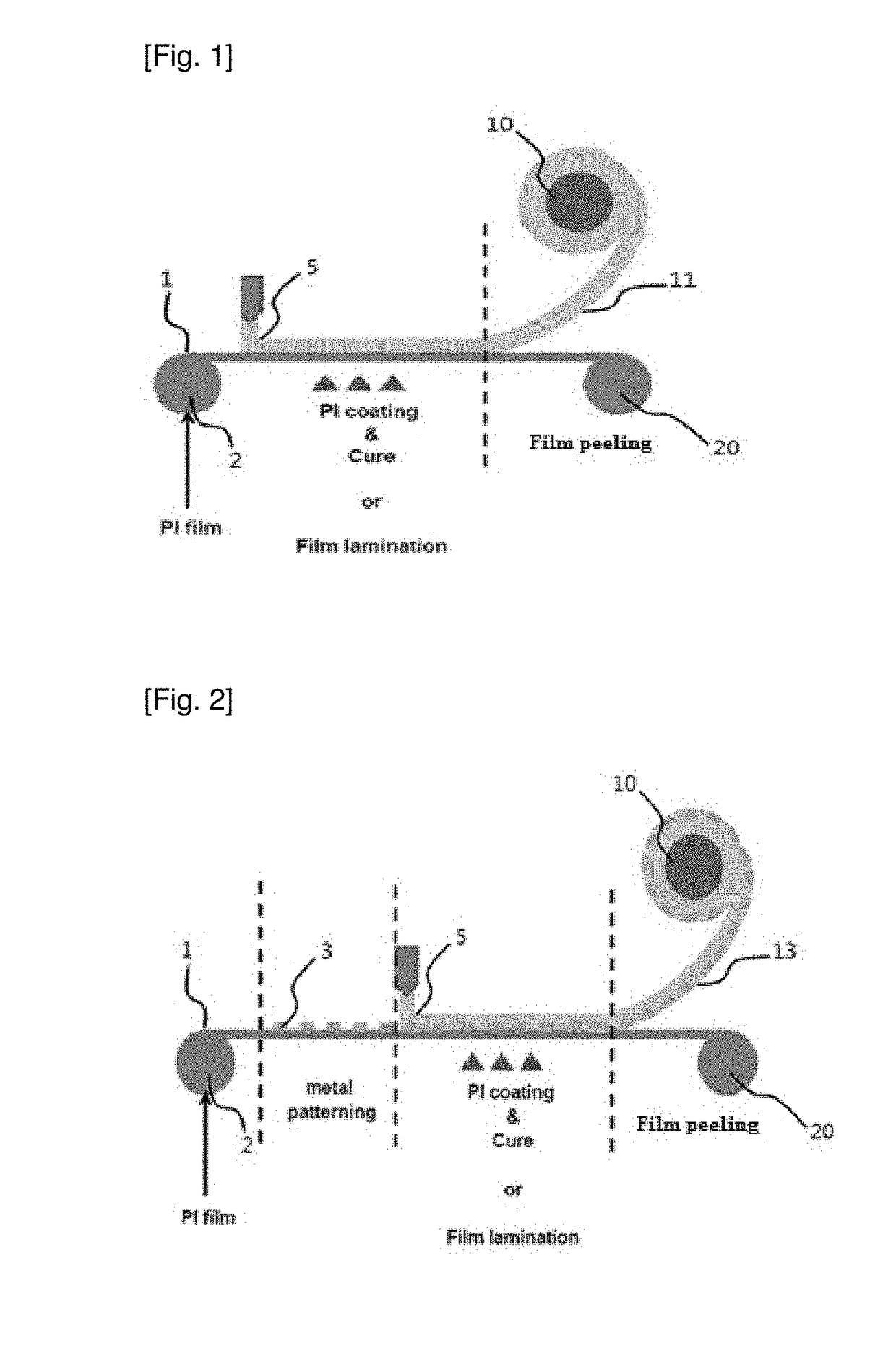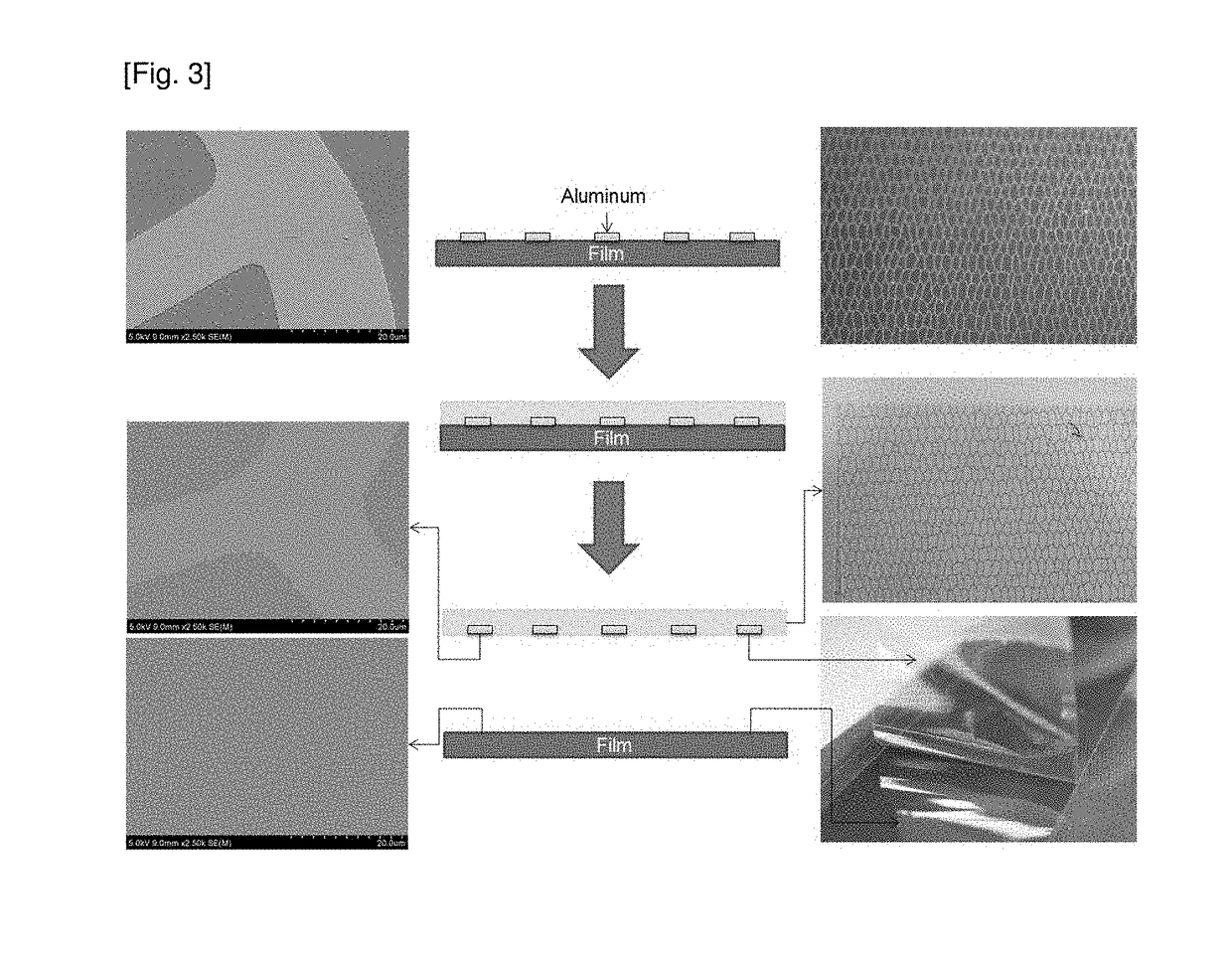Method for fabricating flexible substrate
a technology of flexible substrates and substrates, which is applied in the manufacture of cable/conductors, conductive layers on insulating supports, synthetic resin layered products, etc., can solve the problems of low productivity, low process complexity, and limit the choice of materials, so as to reduce production cost and time, simplify the production process, and facilitate separation
- Summary
- Abstract
- Description
- Claims
- Application Information
AI Technical Summary
Benefits of technology
Problems solved by technology
Method used
Image
Examples
example 1
[0133]1 mol of BPDA was polymerized with 0.99 mol of PDA to prepare a polyamic acid resin. A composition including 20 wt % of the polyamic acid resin and 80 wt % of DMAc as a solvent was cast on a support. Thereafter, the coating was continuously dried at a temperature of 120° C. and cured at stepwise increasing temperatures (150° C.→230° C.→300° C.→400° C.) for 30 min to form a 50 μm thick film (carrier substrate) including a polyimide resin in the form of a roll.
[0134]1 mol of BPDA was polymerized with 0.99 mol of TFMB to prepare a polyamic acid resin. 12 wt % of the polyamic acid resin was mixed with 88 wt % of DMAc as a solvent to prepare a composition for the formation of a flexible substrate layer.
[0135]While the carrier substrate was unwound and transferred at a speed of 0.5 m / min, the composition was applied (cast) to the carrier substrate in the form of a roll such that the thickness after drying was 15 μm. The resulting coating was continuously dried at a temperature of 10...
example 2
[0142]The procedure of Example 1 was repeated except that aluminum was deposited to a thickness of 200 nm on the carrier substrate and was micropatterned before application of the composition for the formation of a flexible substrate layer to the carrier substrate, as illustrated in FIG. 2. Specifically, a resist ink was coated on the entire surface of a silicone blanket and then a cliche engraved with micropatterns was brought into contact with the blanket to form patterns on the silicone blanket. Subsequently, portions of the coating were removed to form micropatterns on the silicone blanket. The resist ink micropatterns formed on the silicone blanket were transferred to the aluminum-deposited carrier substrate and dried in an oven at 115° C. for 3 min to remove the solvent remaining in the resist patterns. The resist patterned aluminum substrate was etched with an etchant by spraying at 45° C. The etchant was cleaned off with deionized water, followed by drying. The remaining res...
PUM
| Property | Measurement | Unit |
|---|---|---|
| adhesion strength | aaaaa | aaaaa |
| peel strength | aaaaa | aaaaa |
| temperature | aaaaa | aaaaa |
Abstract
Description
Claims
Application Information
 Login to View More
Login to View More - R&D
- Intellectual Property
- Life Sciences
- Materials
- Tech Scout
- Unparalleled Data Quality
- Higher Quality Content
- 60% Fewer Hallucinations
Browse by: Latest US Patents, China's latest patents, Technical Efficacy Thesaurus, Application Domain, Technology Topic, Popular Technical Reports.
© 2025 PatSnap. All rights reserved.Legal|Privacy policy|Modern Slavery Act Transparency Statement|Sitemap|About US| Contact US: help@patsnap.com



